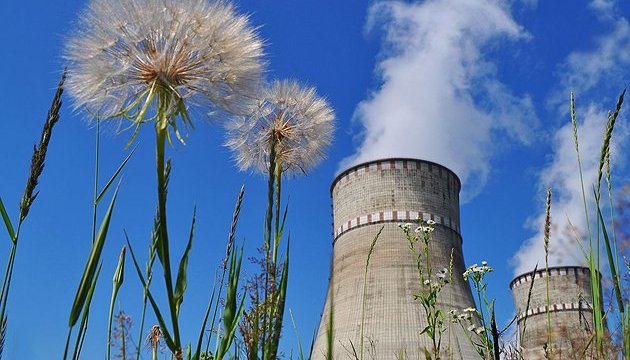УДК 614.842 • Issue 2 (30) / 2019 • 90-98 pages
Maglyovana T.V., Dolin V. V.
Maglyovana T.V., Ph.D., Associate Professor, Cherkasy Fire Safety Institute named after Heroes of Chernobyl, National University of Civil Protection of Ukraine, maglovana_t@ukr.net
Dolin V. V. D. Sc. (Geol.), SI “Institute of Environmental Geochemistry of National Academy of Sciences of Ukraine”
Abstract
The use of environmentally friendly water-extinguishing and fire-retardant substances of the guanidine series for forest fire extinguishing (including radioactively contaminated territories) and minimizing radiation effects has been substantiated. Owning the properties of the polyelectrolyte, under the action of the flow, the polymer molecules are stretched along the flow, reducing the resistance during the movement of water. PGMG macromolecules are oriented parallel to the inner surface of the tubes.Thereby the intensity of turbulent ripples in the wall layer reduces, the turbulence of flows decreases alongside with the hydraulic losses, which, as a result, leads to the increase in fluid flow. It is experimentally established that at the concentration of more than 3-5% the range of supply of water extinguishing agents increases by 10% with the use of the fire extinguisher water mine pumped VVSH-9, and the duration of extinguishing the model fire 1A reduces by 20%. A method of forest fire extinguishing (including radioactively contaminated territories) is proposed, which includes the use of the water extinguishing agent based on polymeric surfactant polyhexamethyleneguanidine (PGMG) directly for extinguishing the edge of a fire with the simultaneous use of PGMG salts. It has been established that the use of the proposed method of forest fire extinguishing can reduce the duration of fire extinguishing by 3-4 times due to the use of hydrodynamically active polymers of guanidine series as water and extinguishing agents and simultaneous formation on the treated forest surface of the combustible materials of polymeric insulation layer which thermal degradation materials act as combustion inhibitors. The use of water-extinguishing and flame-retardant substances of guanidine series for prevention of wind transfer at radioactively contaminated territories as a result of radioactive dust sedimentation and dust suppression with subsequent accumulation of some radionuclides in the upper layers of the treated forest combustible materials has been substantiated. The promise of using the proposed forest fire extinguishing method to reduce the exposure dose rate for the personnel of fire departments, to prevent forest fires, and minimize the economic, environmental and social consequences of them has been shown.
Key words: forest combustible materials, fire extinguishing, water extinguishing agents, polyhexamethyleneguanidine.
Article
Reference
- Azarov, S.I., Eremenko, S.A., Sidorenko, V.L and others; for the total. ed. Volyansky P.B. (2016) Naukovi zasady zakhystu naselennya i terytoriy vid naslidkiv lisovykh pozhezh z radiatsiyno nebezpechnymy faktoramy, Interdruk, Kyiv, UA, 203p.
- Dvornik,A., Dvornik, A.M., Koroletal, R. A. (2016), Radiation and risk, T. 25, №2, pp. 100–108.
- Dusha-Gudym, S.I. (1992) United Nations, Economic Commission for Europe. International Forest Fire News, № 7, pp. 4-6.
- Yoschenko, V.I., Kashparov, V.A., ProtsakV.P., Lundin, S.M., Levtchuk, S.E., Kadygrib, A.M., Zvarich, S.I, Khomutinin, Yu.V., Maloshtan, I.M., Lanshin, V.P., Kovtun, M.V. (2006) JournalofEnvironmentalRadioactivity. Vol.86, pp. 143-163.
- Zakhmatov, D., Silnikov, M.V., Chernyshov, M.V. (2015) Pozharovzryvobezopasnost – Fireand Explosion Safety, Vol. 24, №11, pp. 55–62.
- Dvornik, A.A., Dvornik, A.M., Korol, R. A., Shamal, N. V., Gaponenko, S.O., Bardyukova, V. (2018) Aerosol Scienсe and Technology, Vol. 52, № 8, pp. 923–932.
- Antonov, A.V., Borovykov, V.О., Orel, V.P., Zhartovskyy, V.M., Kovalyshyn, V.V. (2004), Extinguishing agents, Poszhintekhnika, Kyiv, UA, 176р.
- Boot, V.P., Zartovsky, I.G (2008), Primary extinguishing media. Tactics of using, Cherkasy, UA, 136р.
- Kovalishin, V.V., Vasiliev, O.E., Kozyar, N.M. (2007), Foam extinguishing, Spolom, Lviv, UA, 168р.
- Hembitskyy, P.A. (1998), Polimernyy biotsydnyy prepat poliheksametylenhuanidyn , Zaporozhie, UA, 44р.
- Nyzhnyk, V.V, Nyzhnyk Yu. (2009) Fizychna khimiya polimeriv, Phytosociocenter, Kyiv, UA, 424 р.
- Maglyovana, V., Dolin, V.V. (2019) Geochemistry of Technogenesis, №1, рp. 73-81.
- Maglyovana, T.V., Nyzhnyk, Yu., Zhartovsiy S. V. (2017), Environmental aspects of the use of guanidine polymers in emergency situations, Cherkassy, UA, 210 p.
- IAEA Safety Standards for protecting people and the environment. Radiation Protection and Safety of Radiation Sources: International Basic Safety Standards. Interim edition. General Safety Requirements Part 3 No. GSR Part 3 (Interim), IAEA, Vienna, 2011, 303p.
- Normy radiatsiynoyi bezpeky Ukrayiny [Norms of radiation safety of Ukraine], (1998) 6.1.-6.5.001-98, Kyiv, UA, 135 p.
- Nakaz MOZ Ukrayiny (2005) № 54 «Pro za-tverdzhennya derzhavnykh sanitarnykh pravyl «Osnovni sanitarni pravyla zabezpechennya radiatsiynoyi bezpeky Ukrayiny» 177-2005-09-02.
